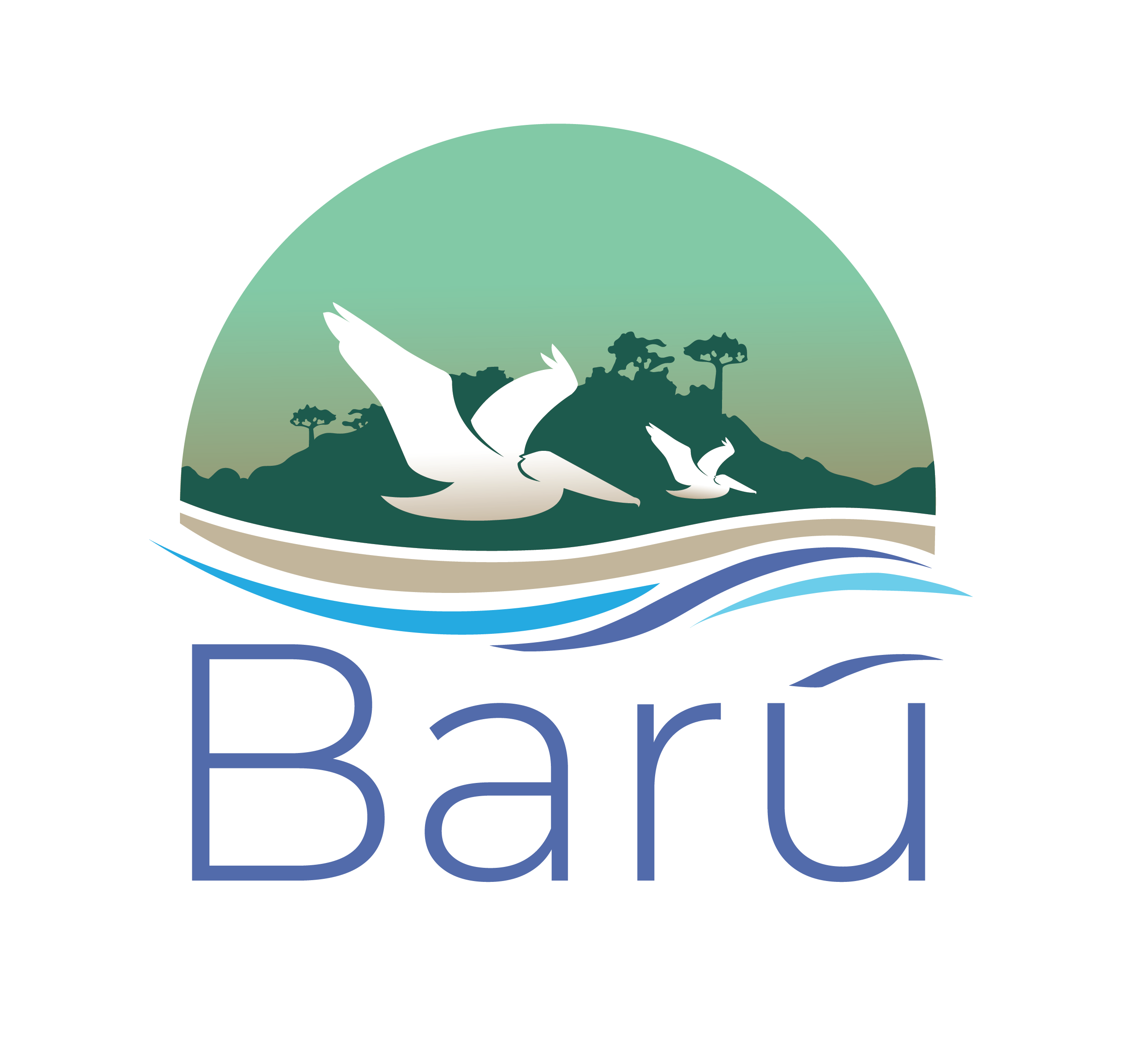Are we green?
A fascinating story of change from cattle ranching to conservation and ecotourism.
Hacienda Barú National Wildlife Refuge
Hacienda Barú National Wildlife Refuge is an internationally recognized nature reserve with 330 hectares of protected area, including primary forest, secondary forest, selectively logged tropical rainforest, swamp forest, mangrove, scrub, riverbank, and beachfront. Additionally, there are tree plantations with many species of commercially viable timber, fruit orchards, and pastures. This wide spectrum of habitats supports an equally large variety of wildlife. The reserve generates income to maintain and protect its natural treasure from just two sources: ecotourism and tree farming.
History
At the beginning of the 20th century, Hacienda Barú was a virgin jungle. However, with the arrival of the first settlers came the destruction of large areas of rainforest. As more people settled in the area, more forests were cleared and replaced with pastureland. By 1972, only one large forest reserve remained in the highlands of Hacienda Barú and a few patches of uncut forest in the lowlands—about 180 hectares in total. By then, many local plant and animal species had disappeared due to deforestation, habitat destruction, and poaching. These included mammals such as the jaguar, tapir, collared peccary, harpy eagle, and scarlet macaw, as well as trees like black manu and Spanish cedar. Most of the lowlands—around 150 hectares—were completely deforested and used for rice cultivation and cattle grazing. Primary forest remained only in two areas: in the highlands of the property, where the terrain was too steep to farm; and in the mangrove area near the mouth of the Barú River, where the salty water was unsuitable for crops or pasture.
Hacienda Barú Today
Today, dense secondary forest has grown where cattle once roamed, leaving little evidence of the property’s former incarnation. The cacao plantations still exist, but nowadays the cacao is harvested by monkeys.
Forest areas that were once habitat islands, separated by vast pastures, are now connected by secondary forest that has grown over the coastal plain. Wildlife can now roam freely throughout the reserve. Sloths, agoutis, peccaries, and great curassows have found their way back to the lowlands after nearly four decades of absence.
Currently, Hacienda Barú is an active part of a large wildlife corridor called “The Path of the Tapir Biological Corridor”. This ambitious project stretches 100 kilometers along the Pacific coast, from the Sierpe-Térraba mangrove system and Corcovado National Park to Los Santos Forest Reserve by the Savegre River. Jaguars, tapirs, peccaries, and scarlet macaws disappeared from this area in the 1950s, but can still be found in Corcovado and Los Santos. It is our hope that one day we will see these animals living at Hacienda Barú once again.
The Path of the Tapir Biological Corridor is an initiative of the “Friends of Nature of the Central and Southern Pacific” Association (ASANA), a local environmental organization dedicated to protecting nature in the region. Hacienda Barú has long supported ASANA, including donating a plot of land where ASANA’s office is located.
Hacienda Barú Lodge and Ecotours
Hacienda Barú Lodge was created by the same people who restored 150 hectares of natural habitat from former pastures and farmland. It is operated with the same philosophy of respect for nature and the environment. In addition to restoring and protecting natural habitat, Hacienda Barú Lodge does many things to minimize its environmental impact:
- The lodge occupies less than one percent of the 330 hectares of Hacienda Barú.
- All wood used in construction and repairs comes from renewable sources.
- Most lighting is provided by LED bulbs.
- We do not use air conditioning anywhere. To keep cool, we rely on roof insulation, good ventilation design, and fans.
- We monitor electricity use and constantly seek ways to conserve.
- All organic waste is processed and used as compost in our gardens.
- Wastewater is treated in septic tanks with drainage systems. We use microorganisms to improve solid waste decomposition in these systems.
- Everything that can be reused—paper, wood, construction materials—is reused two or three times for various purposes until it is completely worn out. For example, all office paper is used on both sides. Old wood from buildings is used to create steps on trails. Old roofing tin is used to cover signs.
- We ask tour guests to bring a reusable water bottle, which we refill at no cost. This helps reduce plastic waste. We also recycle all plastic bottles.
- All of our cleaning products are biodegradable.
- Hand soap and bath soap dispensers help reduce waste.
- Guests have the option to reuse their towels for a second or third day, a measure intended to conserve water and reduce the amount of cleaning agents entering the environment.
- Our laundry area uses a solar dryer instead of electric dryers.
- Management and staff at Hacienda Barú are active in community affairs. They hold leadership roles in local government, development associations, school boards, water associations, neighborhood security committees, and environmental organizations. In addition, Hacienda Barú supports these community organizations with donations of money and services.
- All products in our gift shop are made in Costa Rica and, when possible, purchased directly from the artisans.
- We do everything we can to keep plastic out of the environment. In our restaurant, we offer biodegradable straws only to those who request them. Takeout food is packed in containers made from organic materials. Gift shop bags are made of paper.






